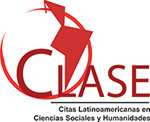Trombolisis con estreptoquinasa recombinante en el infarto agudo de miocardio en el adulto mayor
DOI:
https://doi.org/10.23857/dc.v2i2.158Palabras clave:
adulto mayor, infarto agudo de miocardio, trombolisis, estreptoquinasa recombinanteResumen
Se efectuó una investigación cuantitativa, descriptiva y transversal, en pacientes con diagnóstico de infarto agudo de miocardio, en la unidad de cuidados intensivos coronarios del Hospital Universitario General Calixto García , durante un año. Los objetivos fueron: identificar la mortalidad hospitalaria y la evolución en estos pacientes en relación con el grupo de edad y la aplicación o no de tratamiento trombolítico. Se incluyeron 226 pacientes, divididos en dos grupos. El grupo I (edad < 65 años) y grupo II (edad > o = 65 años). Se les realizó tratamiento trombolítico a 135 pacientes (59.7 %). Concluyendo que los pacientes con 65 años o mós tuvieron una evolución mós complicada, y mayor mortalidad, se les realizó menos trombolisis. El grupo II, subgrupo sin trombolisis presentó una incidencia mayor de complicaciones relacionadas con la fase aguda del infarto.
Citas
ANTMAN E, [et al.] for the ExTRACT-TIMI 25 Investigators. Enoxaparin versus Unfractionated Heparin with Fibrinolysis for ST-Elevation Myocardial Infarction. N Engl J Med 2006; 354:1477-1488
BUENO H. Ischemic heart disease in the elderly: a need to understand the causes of high mortality after acute myocardial infarction. Am J Geriatr Cardiol. 2000; 9:271-2
BARDAJI A, [et al.] Tratamiento y evolución a corto plazo de los ancianos con infarto agudo de miocardio ingresados en hospitales con disponibilidad de angioplastia primaria. El Registro
TRIANA (Tratamiento del Infarto Agudo de miocardio en Ancianos). Rev Esp Cardiol. 2005; 58(4) pp 351-8. DOI: 10.1157/13073891.Disponible en : http://www.revespcardiol.org/es/tratamiento-evolucion-corto-plazo-los/articulo/13073891/
BUENO H, [et al.]. In-hospital outcome of elderly patients with acute inferior myocardial infarction and right ventricular involvement. Circulation 1997; 96: 436-441.
GOLDBERG R, [et al.]. Age and sex differences in presentation of symptoms among patients with acute coronary disease: the REACT Trial. Rapid Early Action for Coronary Treatment. Coron Artery Dis 2000; 11:399-407.
ISIS-2 (Second International Study of Infarct Survival) Collaborative Group. A randomized trial of intravenous streptokinase, oral aspirine, both or neither among 17,187 cases of suspected acute myocardial infarction. Lancet 1988; 2: 349-360
KEELEY EC, BOURA JA, GRINES CL. Primary angioplasty versus intravenous thrombolytic therapy for acute myocardial infarction: a quantitative review of 23 randomised trials. Lancet 2003; 361:13-20
KRUMHOLZ H.M. 2001. Cardiopatía isquí©mica en el anciano. Conferencia Especial del XXXVI Congreso Nacional de la Sociedad Española de Cardiología Rev Esp Cardiol.; 54 (7) , pp. 819-26. Disponible en: http://www.revespcardiol.org/es/cardiopatia-isquemica-el-anciano-conferencia/articulo/13016244/
ROHLFS I, [et al.]. 2002 Tendencias en la proporción de pacientes menores de 75 años con infarto agudo de miocardio que presentan Killip III-IV. Variables asociadas con su aparición y con el pronóstico: 1978-1997. Rev Esp Cardiol; 55(11) pp. 1117-23. Disponible en : http://www.revespcardiol.org/es/tendencias-proporcion-pacientes-menores-75/articulo/13039212/
SHEIFER S.E, [et al.] Prevalence, predisposing factors, and prognosis of clinicall y unrecognized myocardial infarction in the elderly. J Am Coll Cardiol 2000; 35:119-26.
STENESTRAND U, WALLENTIN L. Fibrinolytic therapy in patients 75 years and older with ST-segment-elevation myocardial infarction: one-year follow-up of a large prospective cohort. Arch Intern Med 2003; 163:965-71.
STEG P.G, [et al.], for the GRACE Investigators. Baseline characteristics, management practices, and in-hospital outcomes of patients hospitalized with acute coronary syndromes in the Global Registry of Acute Coronary Events (GRACE). Am J Cardiol 2002; 90:358-63.
SOUMERAI S. B, [et al.]. Effectiveness of thrombolytic therapy for acute myocardial infarction in the elderly: cause for concern in the old-old. Arch Intern Med. 2002; 162:2139-40.
STENESTRAND U, WALLENTIN L, Register of Information and Knowledge About Swedish Heart Intensive Care Admissions (RIKSHIA). Fibrinolytic therapy in patients 75 years and older with ST-segment-elevation myocardial infarction: one-year follow-up of a large prospective cohort. Arch Intern Med. 2003; 163:965-71.
TIEFENBRUNN A. J, [et al.]. Clinical experience with primary percutaneous transluminal coronary angioplasty compared with alteplase (recombinant tissue-type plasminogen activator) in patients with acute myocardial infarction: a report from the Second National Registry of Myocardial Infarction (NRMI-2). J Am Coll Cardiol. 1998; 31:1240 –1245.
WIDIMSKY P, ; ‘PRAGUE’ Study Group Investigators. Long distance transport for primary angioplasty vs immediate thrombolysis in acute myocardial infarction: final results of the randomized national multicentre trial—PRAGUE-2. Eur Heart J. 2003; 24: 94–104.
White HD. Thrombolytic therapy in the elderly. Lancet. 2000; 356: 2028-30.
Descargas
Publicado
Cómo citar
Número
Sección
Licencia
Authors retain copyright and guarantee the Journal the right to be the first publication of the work. These are covered by a Creative Commons (CC BY-NC-ND 4.0) license that allows others to share the work with an acknowledgment of the work authorship and the initial publication in this journal.







